Idea by
Maksym Rokmaniko, Cem Kayatekin (independent collaborator), Jane A. Dier (partner), Alyona Khoroshilova (independent collaborator), Anna Pikovska, Olga Senchurova
anarcitects
Call for ideas 2017
601 Gradients Workshop
601 Gradients Workshop
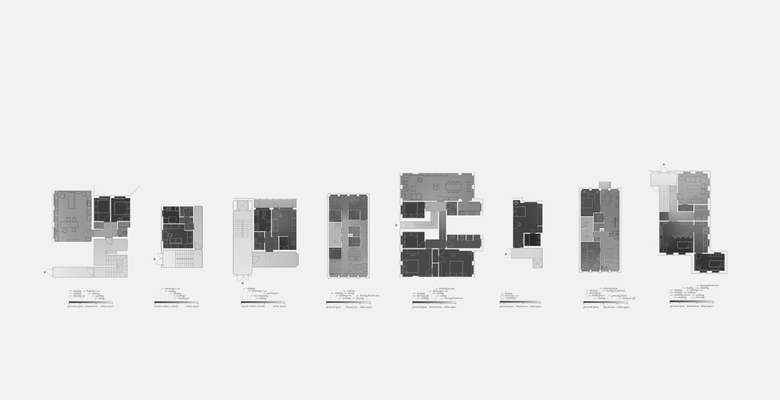
Today, as more and more people are moving to cities, alternative ways of living together are becoming more popular, and new models of ownership are being discussed. These new modalities seem to deconstruct the strictly dichotomized conception of “private” and “public” into a much more robust and fine-grained gradient.
601 Gradients Workshop is an attempt to engage in a richer discourse concerning issues of private space, shared space, public space, etc., in the context of contemporary living and live/work situations, in order to conceive of a new, problem-specific architectural language, operating beyond the threshold of mere binary oppositions.
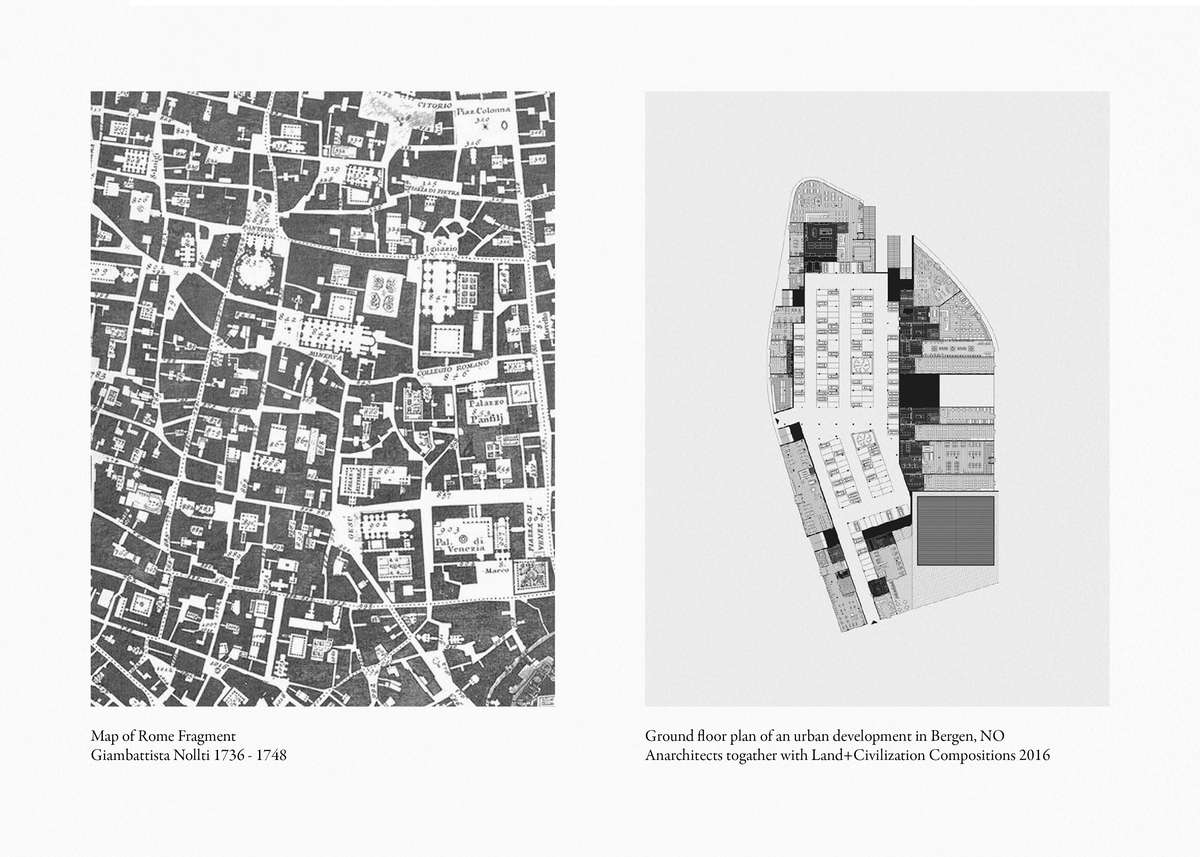
The classic Nolli Map of Rome as an iconic representation of public and private spaces within the city - it has always been, literally, too black and white. A binary division of "private" and "public" seems to not be enough to describe the feeling one has while enjoying the sun in a public square or a courtyard, sitting on a balcony, reading at a kitchen or resting in a bedroom.
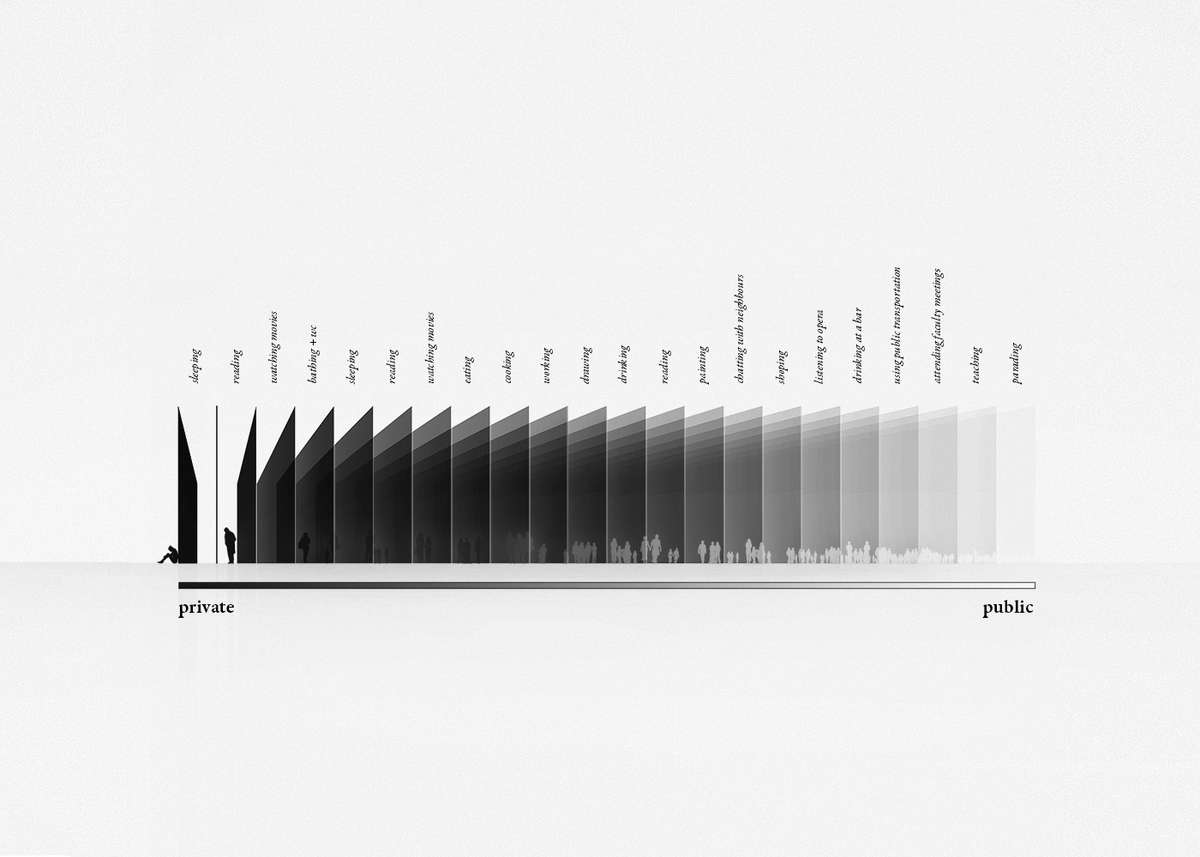
Within the suggested method, we call activities 100% private when they involve only one person; and activities in which uncountable numbers of individuals take part in, we call 100% public. Analogous to the Nolli Map, we use black for private spaces. The lighter the color gets the more public space is. And last but not least, thresholds are the architectural elements (e.g. walls, doors, partitions) that help to frame the gradient.
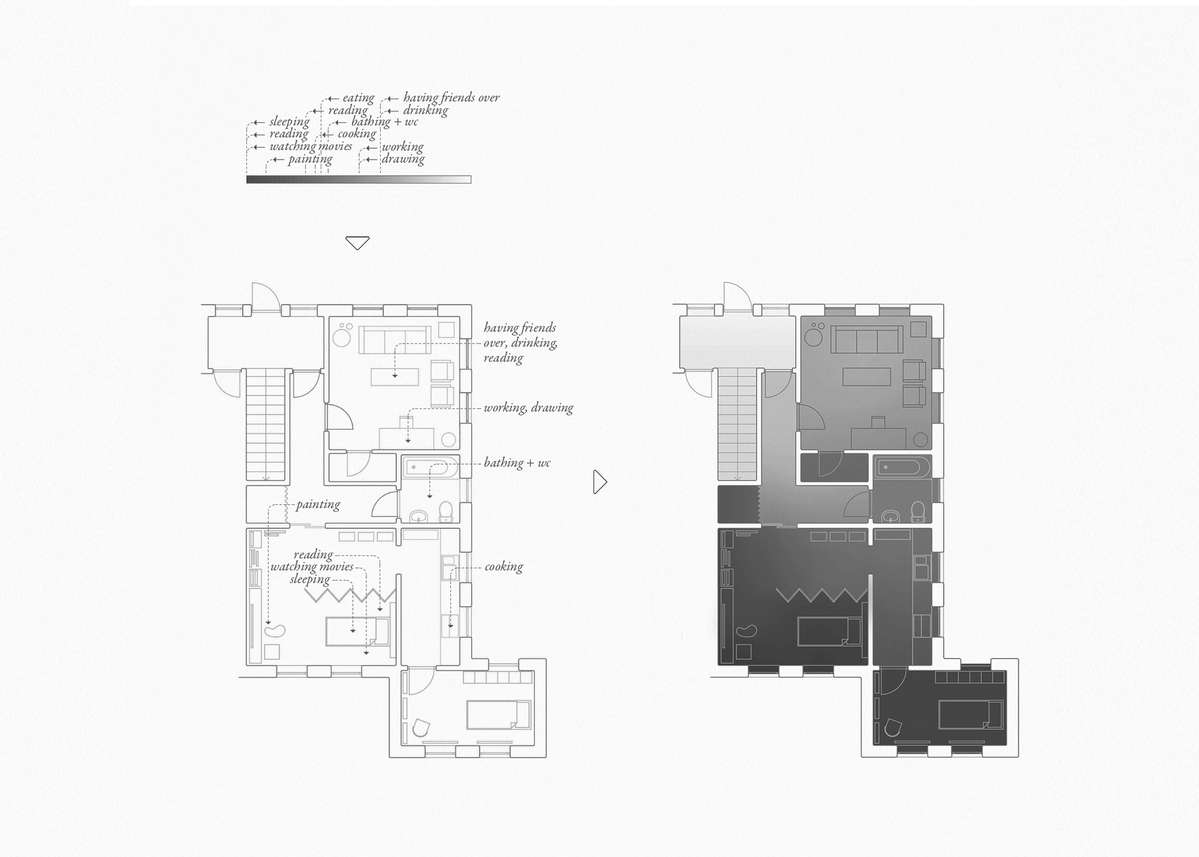
What Gradients Workshop aims to do, is to establish a robust archive of contemporary living and live/work situations employed within cities throughout the world. How do contemporary generations actually live and live/work - that is the question. This is to be done through interviews and spatial mapping. Above is an example of how activities have been mapped within an initial case study, with understandings of gradients and thresholds.
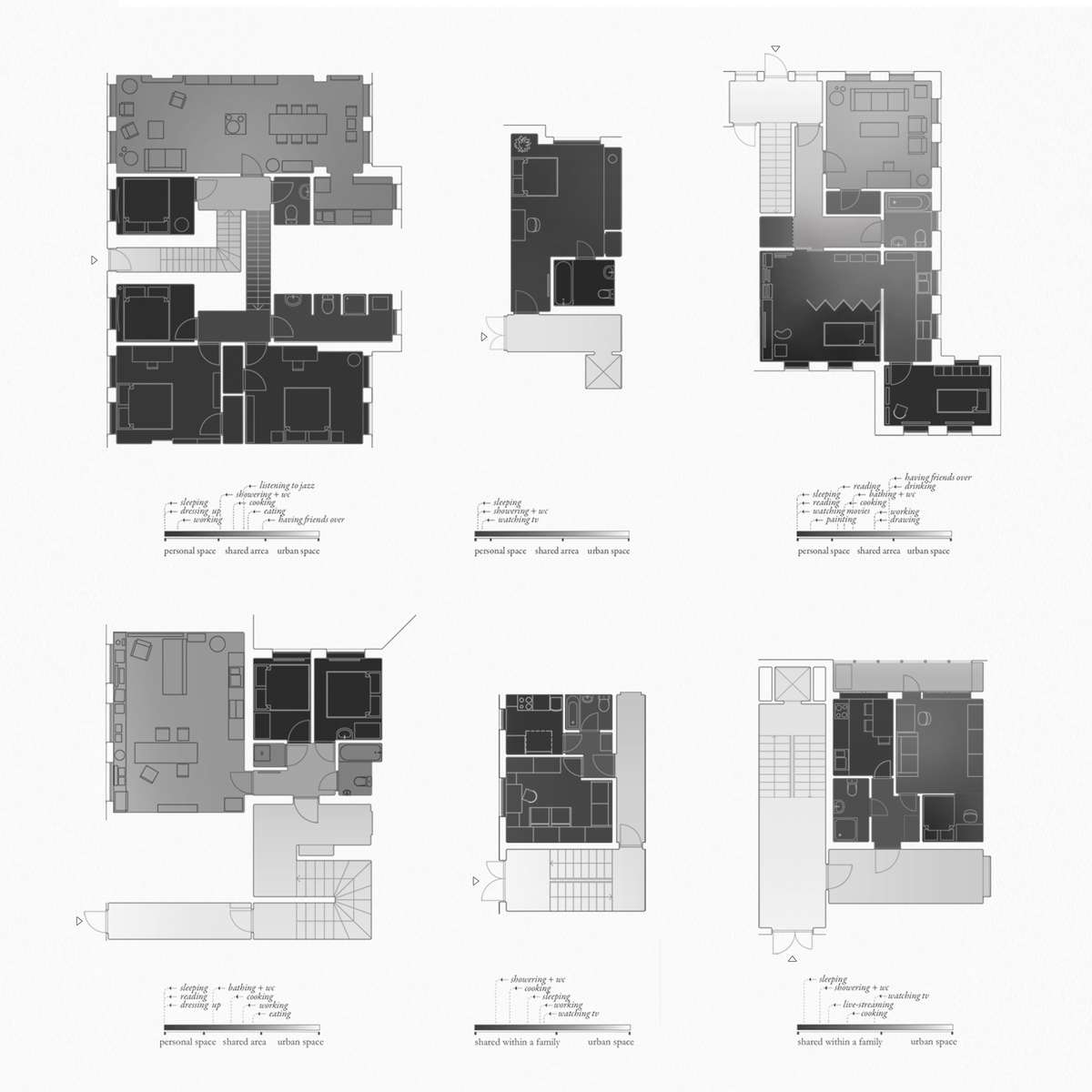
In continuously analysing the growing array of case studies, two analytical paths unfold. First, we study real-life dwelling scenarios and architecture that supports them, simply reinforcing Gradients Workshop as a rich platform that collects and examines documented narratives. Second, we speculate on alternative architectural forms and elements, that would allow a wider variety of dwelling scenarios.
601 Gradients Workshop
601 Gradients Workshop

Today, as more and more people are moving to cities, alternative ways of living together are becoming more popular, and new models of ownership are being discussed. These new modalities seem to deconstruct the strictly dichotomized conception of “private” and “public” into a much more robust and fine-grained gradient.
601 Gradients Workshop is an attempt to engage in a richer discourse concerning issues of private space, shared space, public space, etc., in the context of contemporary living and live/work situations, in order to conceive of a new, problem-specific architectural language, operating beyond the threshold of mere binary oppositions.
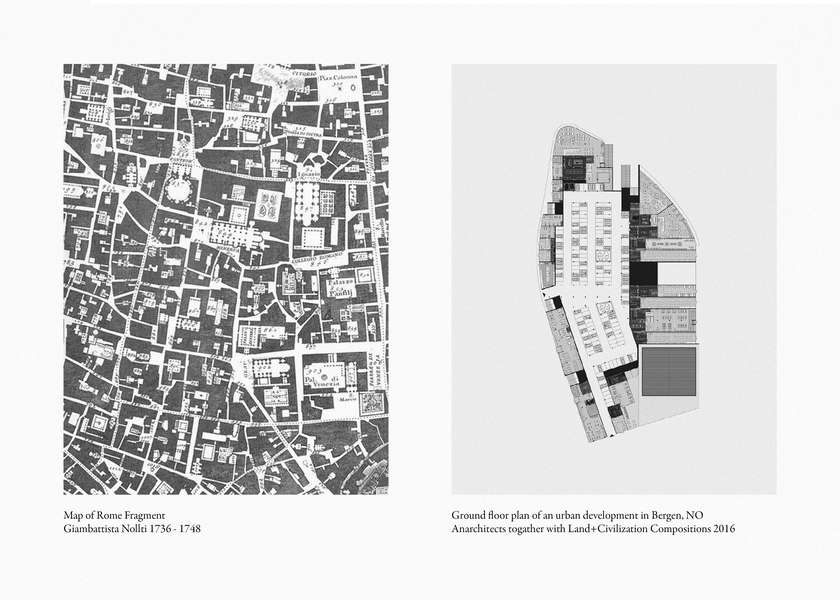
The classic Nolli Map of Rome as an iconic representation of public and private spaces within the city - it has always been, literally, too black and white. A binary division of "private" and "public" seems to not be enough to describe the feeling one has while enjoying the sun in a public square or a courtyard, sitting on a balcony, reading at a kitchen or resting in a bedroom.
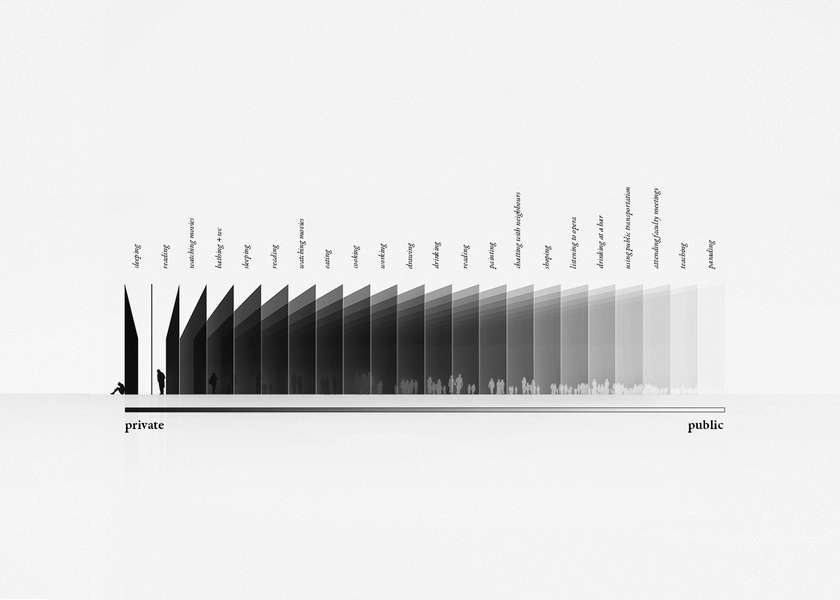
Within the suggested method, we call activities 100% private when they involve only one person; and activities in which uncountable numbers of individuals take part in, we call 100% public. Analogous to the Nolli Map, we use black for private spaces. The lighter the color gets the more public space is. And last but not least, thresholds are the architectural elements (e.g. walls, doors, partitions) that help to frame the gradient.
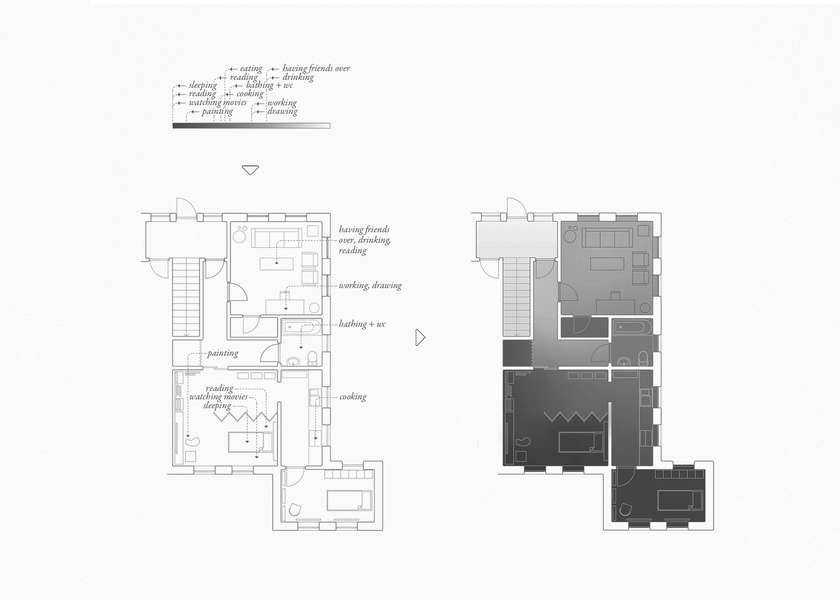
What Gradients Workshop aims to do, is to establish a robust archive of contemporary living and live/work situations employed within cities throughout the world. How do contemporary generations actually live and live/work - that is the question. This is to be done through interviews and spatial mapping. Above is an example of how activities have been mapped within an initial case study, with understandings of gradients and thresholds.
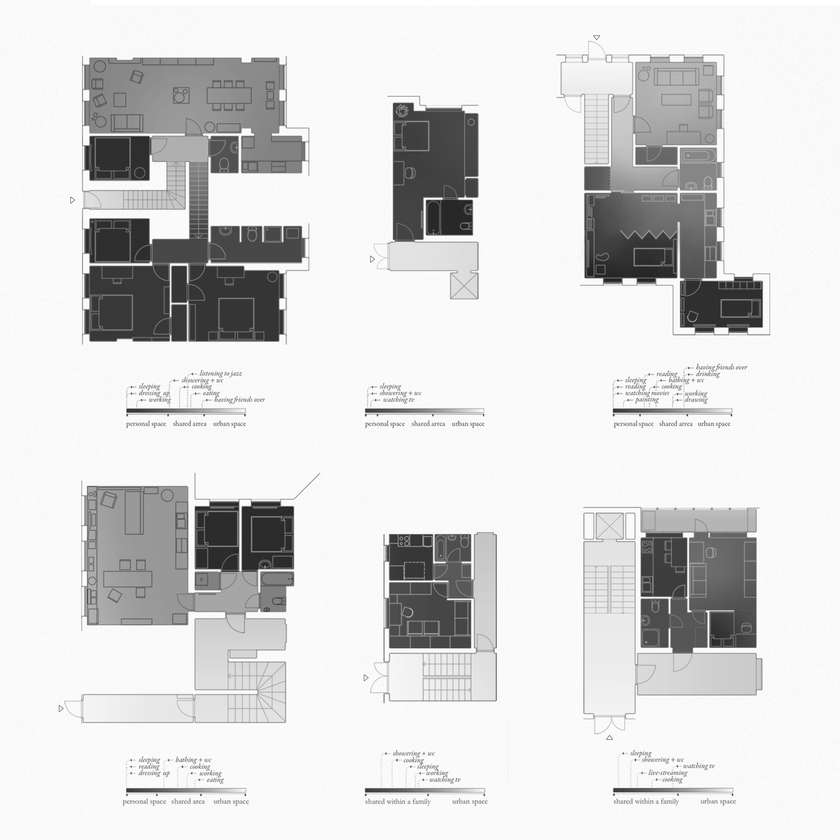
In continuously analysing the growing array of case studies, two analytical paths unfold. First, we study real-life dwelling scenarios and architecture that supports them, simply reinforcing Gradients Workshop as a rich platform that collects and examines documented narratives. Second, we speculate on alternative architectural forms and elements, that would allow a wider variety of dwelling scenarios.